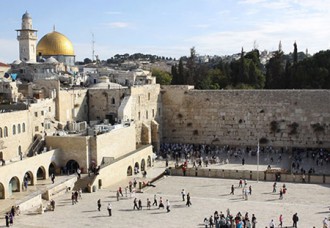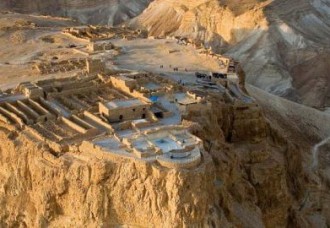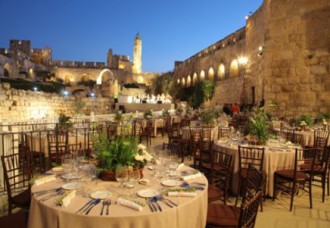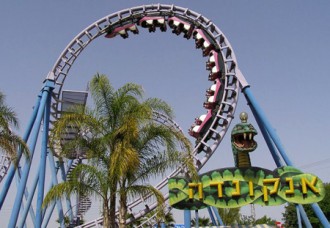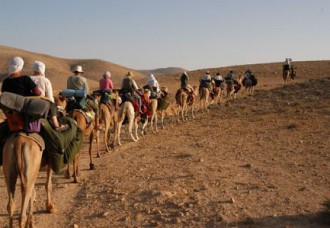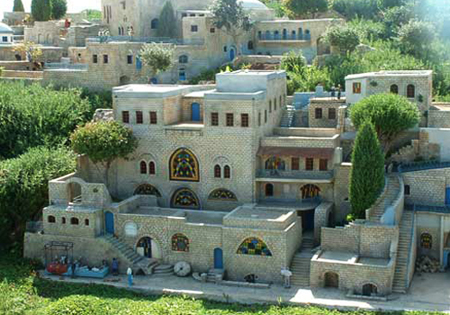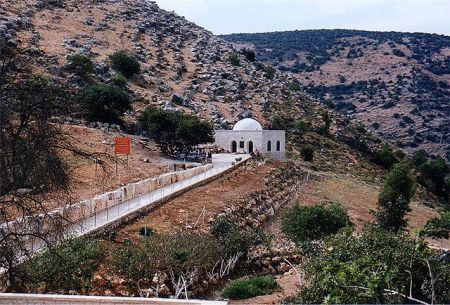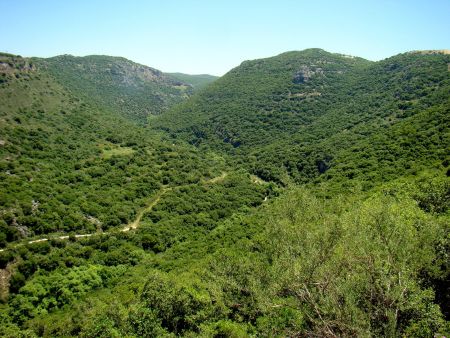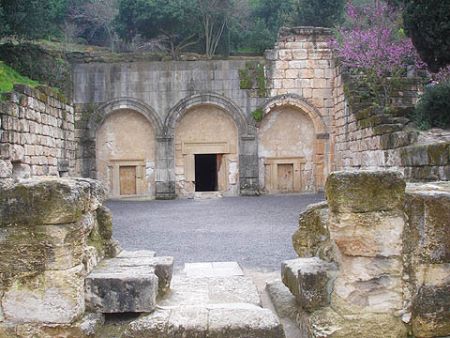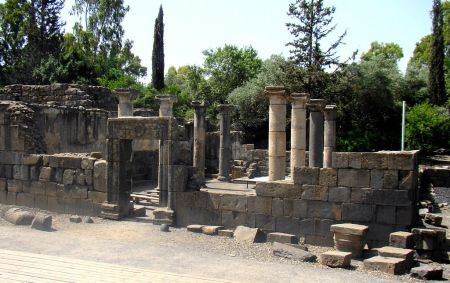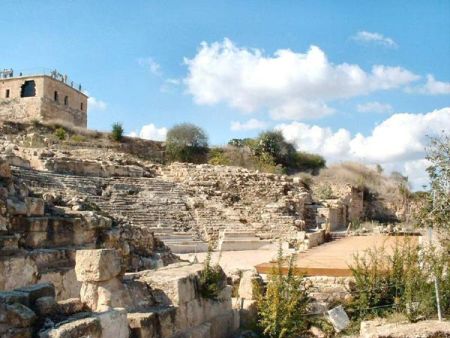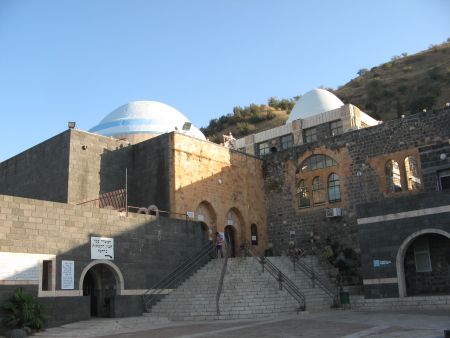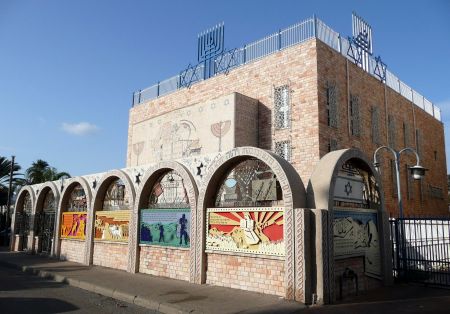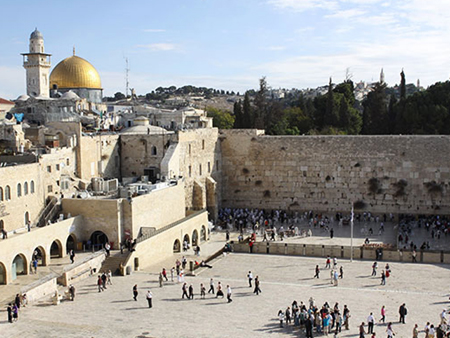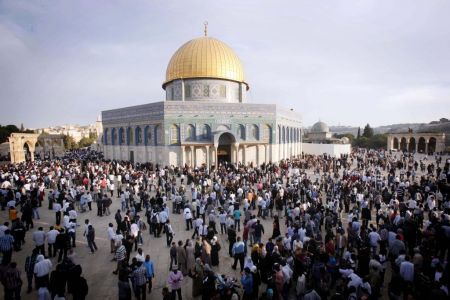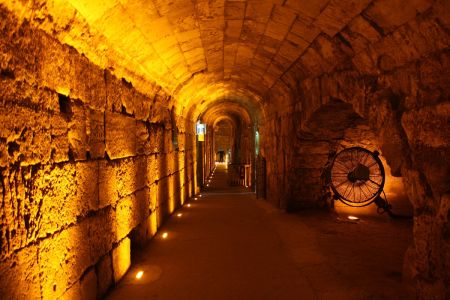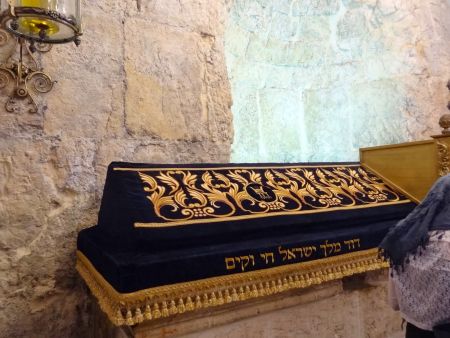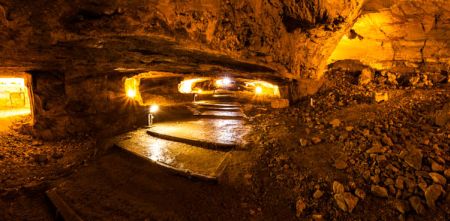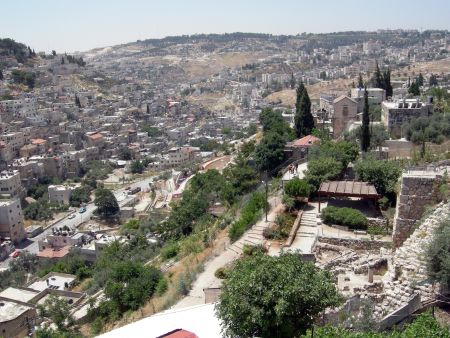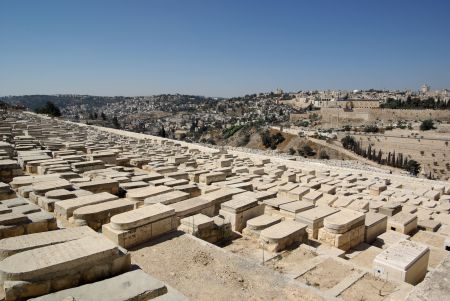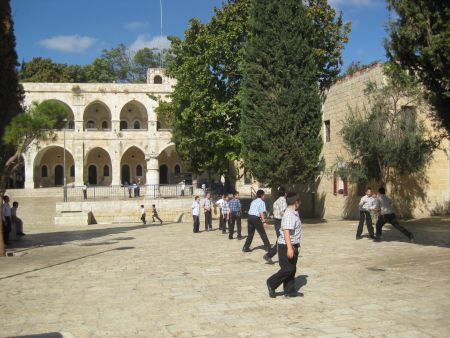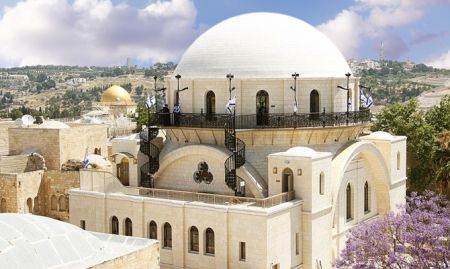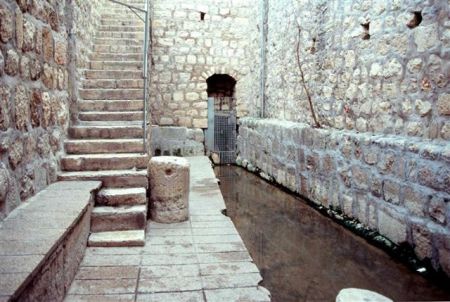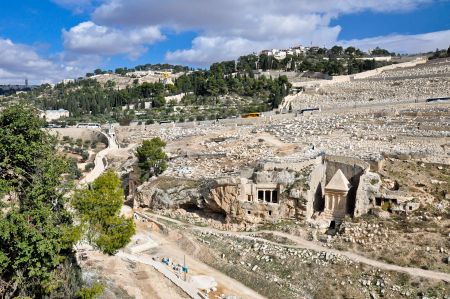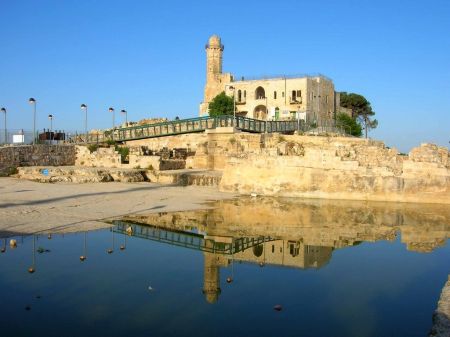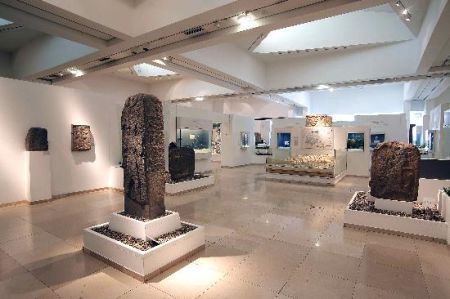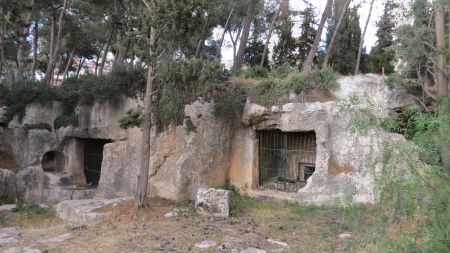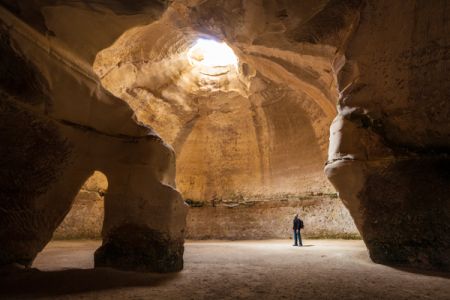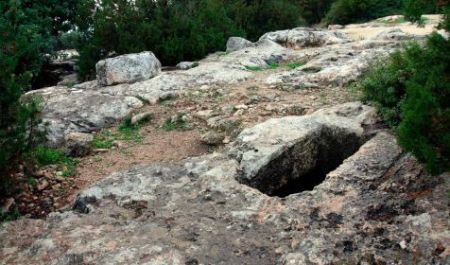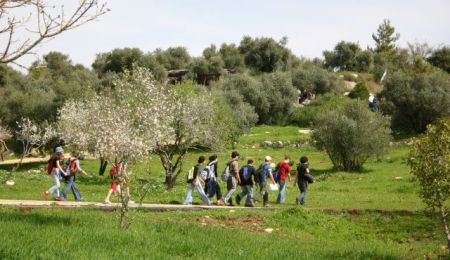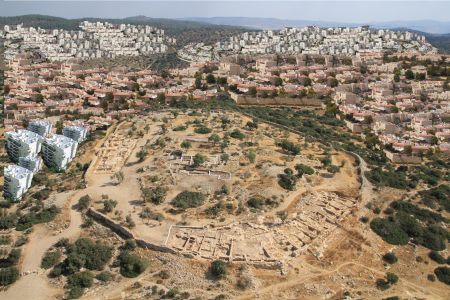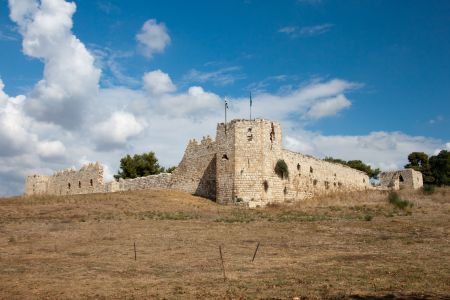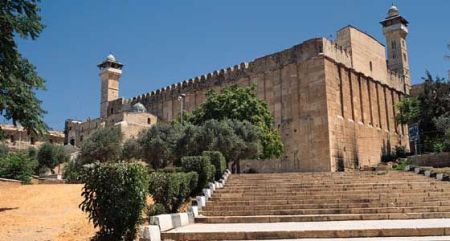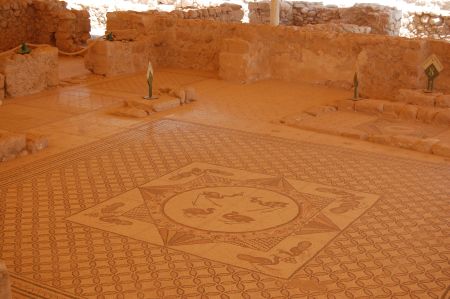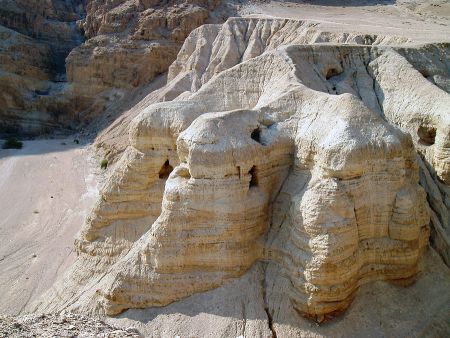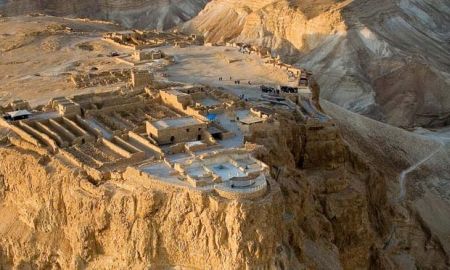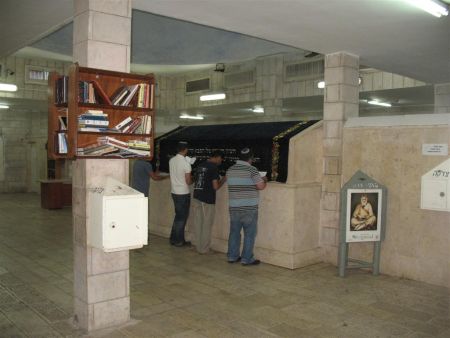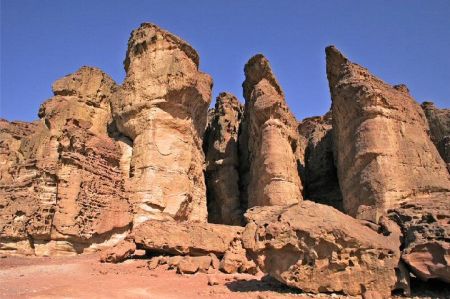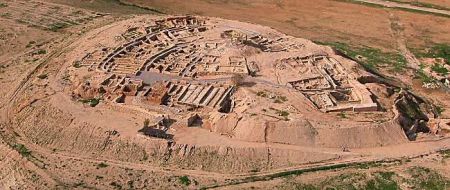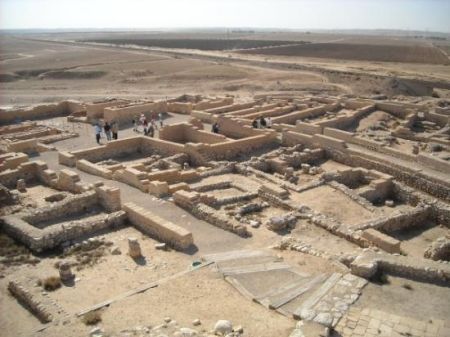Places to visit
North
Safed.
Safed is the highest city in the Galilee and in Israel. It is a rather small town located 900 meters above sea level in the mountains of the Upper Galilee, it commands magnificent views east to the Golan, north to the Hermon and Lebanon, west to Mt. Meron and the Amud Valley, and south to Tiberias and the Kinneret (Sea of Galilee).
Since the 16th century, Safed has been considered one of Judaism’s Four Holy Cities, along with Jerusalem, Hebron and Tiberias. Since that time, the city has remained a center of Kabbalah, also known as Jewish mysticism.
Main sights in Safed are historic synagogues: the famous Sephardic Synagogue of the Ari, Bana’a Synagogue, Yosef Caro Synagogue and others. There are a lot of caves near Safed. The most famous of them is the Cave of Shem and Ever. This cave is connected with the name of Shem and Ever, son and great-grandson of Noah. In the western part of the city, at the foot of the mountain, there is an ancient cemetery, where are buried the famous rabbis who lived in the XVI century: Cordovero, Alkabetz, Alsheh, Ari.
The Tomb of Yonatan Ben-Uziel.
Yonatan ben Uziel lived 2000 years ago. He was the greatest of all the students of Rabbi Hillel. His burial place in Amuka, near Safed, is one of the main Jewish pilgrimage sites in Israel. Tradition has it that Rabbi Yonatan Ben Uziel gave a blessing to all those who are unmarried that if they visited his resting place they would merit to meet their soul mates and marry within the period of one year. This blessing has worked for all these centuries and countless numbers of people have married.
Meron.
Mount Meron is a mountain in Israel. It has special significance in Jewish religious tradition and parts of it have been declared a nature reserve. Meron is most famous for the tomb of Rabbi Shimon bar Yochai. Rabbi Shimon’s tomb is a magnet for Jewish pilgrims, especially on Lag Ba’omer when tens of thousands of people stream to Meron to pray and celebrate, some camping out for days.
Beit She’arim.
Beit She’arim is the archeological site of a Jewish town and a large number of ancient rock-cut Jewish tombs. It is situated 20 km east of Haifa in the southern foothills of the Lower Galilee. Beit She’arim was once the headquarters of the Sanhedrin and became a world-renowned cemetery after Rabbi Judah Hanasi, compiler of the Mishnah, was interred here. Excavations have unearthed 20 catacombs with over 200 stone coffins bear fascinating inscriptions and designs, some newly reopened after conservation. Visitors can also see the remains of a synagogue and an olive press.
The Talmudic Village of Katsrin.
The Talmudic Village of Katsrin is an open air museum located in the Golan Heights on the outskirts of the Israeli settlement Katzrin. It features the reconstructed remains of a Talmudic-era village. A highlight is the visit to the remains of Katzrin’s stately Talmudic-era synagogue, where modern-day Bar/Bat Mitzvahs and weddings can even be arranged. By special arrangement, bread-baking, pottery-making and even olive-pressing in season can be part of the experience.
Sephoris. Tzippori.
Sephoris, also known as Tzippori, is a beautifully preserved roman city in the northern valleys. The origins of its name are in Hebrew word Ciphore (bird) for it is located on the top of the hill, as bird sits in its nest.
Sephoris is also known as the capital of mosaics, because of large amount of beautifully preserved roman mosaic floors, found during excavations. Among those floors, one of most notable is the mosaic of synagogue, picturing the Binding of Isaac, the circular calendar and the Temple tools.
But the most fame to the city was brought by one of its citizens – Yehuda HaNassy (Judah The Prince) who have lived in Sephoris in early 3rd century and there he finished his work on Mishna.
The Tomb of Maimonides.
Maimonides’ tomb, located in central Tiberias, has become one of the most important Jewish pilgrimage sites in Israel. Considered among the greatest sages of the Jewish people whose analytical abilities are admired to this day, Maimonides, known as the Rambam (the acrostic of his name), was also a physician to the Muslim ruler Saladin. He composed a special healers’ prayer, the Jewish equivalent of the Hippocratic Oath, which physicians often make a point of visiting the tomb to recite.
Maimonides died in Cairo in 1204 and his remains were later re-interred in Tiberias. The walkway to the tomb is symbolic – seven columns on either side are inscribed with the names of the 14 chapters of his famed codification of the Mishnah, the Mishneh Torah, and a stream of water flows along the sides. A large metal structure over the tomb complex symbolizes a crown, indicating the great respect accorded Maimonides in Jewish tradition.
Tomb of Rabbi Akiva in Tiberias.
A visit to Rabbi Akiva’s tomb in Tiberias is a chance to consider the many aspects of his life with significance for the Jewish people and all humanity: he started out as a poor ignorant shepherd, but became a great sage with 24,000 students, and a wealthy man. His wife Rachel, who married him against the wishes of her father because of Akiva’s poor prospects, supported his career of study; theirs was a great love story. Akiva, who backed the second-century CE rebel leader Bar Kokhba, was put to death by the Romans with the Shema the last words to pass his lips.
According to tradition, his body was miraculously transported to Tiberias for burial alongside his students who had died in a plague. His tomb, located on the mountainside behind the Kiryat Moshe neighborhood, overlooks Tiberias and the Kinneret, and has been a pilgrimage site at least since the early Middle Ages. It became a special tradition to pray for rain at Rabbi Akiva’s tomb during drought years.
The Or Torah (Tunisian) Synagogue in Acre.
The Tunisian Synagogue in Acre – known as the “Jariva” is the only one of its kind in the world. It is literally covered in mosaics – both inside and out. Each of its 4 floors proudly displays spectacular mosaics (from Kibbutz Eilon) – the outcome of 54 years of work. The Synagogue boasts 7 Torah arks and houses hundreds of millions of natural stones from all over Israel. The mosaics and stained-glass windows depict the history of the Jewish people and of the Land of Israel through Bible stories, flora and fauna, IDF corps and more.
Center
The Western Wall.
The Western Wall or is located in the Old City of Jerusalem at the foot of the western side of the Temple Mount. Parts of the wall are remnants of the ancient wall that surrounded the Jewish Temple’s courtyard, and is arguably the most sacred site recognized by the Jewish faith outside of the Temple Mount itself. Just over half the wall, including its 17 courses located below street level, dates from the end of the Second Temple period, commonly believed to have been constructed around 19 BCE by Herod the Great, but recent excavations indicate that the works were not finished during Herod’s lifetime.
The Western Wall has been a site for Jewish prayer and pilgrimage for centuries; the earliest source mentioning Jewish attachment to the site dates back to the 4th century. Today, millions of visitors come to the Western Wall every year. Thousands of Bar and Bat Mitzvah children choose to mark this special event with their families at the Wall. Soldiers serving in the Israel Defense Forces swear loyalty to their nation and homeland at the Western Wall Plaza. People from all over the world pay their respects to the Jewish people’s magnificent history by visiting this special site.
The Temple Mount.
The Temple Mount is one of the most important religious sites in the Old City of Jerusalem. It has been used as a religious site for thousands of years. At least four religions are known to have used the Temple Mount: Judaism, Christianity, Roman religion, and Islam. The present site is dominated by three monumental structures from the early Umayyad period: the al-Aqsa Mosque, the Dome of the Rock and the Dome of the Chain.
Judaism regards the Temple Mount as the place where God chose the divine presence to rest; according to the rabbinic sages whose debates produced the Talmud, it was from here the world expanded into its present form and where God gathered the dust used to create the first man, Adam. The site is the location of Abraham’s binding of Isaac. According to the Bible, two Jewish Temples stood at the Temple Mount, though there is no proof for the first temple. According to the Bible the site should function as the center of all national life—a governmental, judicial and, of course, religious center. During the Second Temple period it functioned also as an economic center. Jewish tradition maintains it is here the Third and final Temple will also be built. The location is the holiest site in Judaism and is the place Jews turn towards during prayer.
The Western Wall Tunnel.
The Western Wall Tunnel is an underground tunnel exposing the full length of the Western Wall. The tunnel is adjacent to the Western Wall and is located under buildings of the Old City of Jerusalem. While the open-air portion of the Western Wall is approximately 60 meters long, the majority of its original length is hidden underground. The tunnel allows access to an additional 485 meters of the wall.
King David’s Tomb.
King David’s Tomb is a site viewed as the burial place of David, King of Israel, according to a tradition beginning in the 12th century. It is located on Mount Zion in Jerusalem, near the Hagia Maria Sion Abbey. The tomb is situated in a ground floor corner of the remains of the former Hagia Zion, a Byzantine church. The building is now part of the Diaspora Yeshiva.
Zedekiah’s Cave.
Zedekiah’s Cave, also Solomon’s Quarries, is a 5-acre (20,000 m2) underground meleke limestone quarry that runs the length of five city blocks under the Muslim Quarter of the Old City of Jerusalem. It was carved over a period of several thousand years and is a remnant of the largest quarry in Jerusalem, stretching from Jeremiah’s Grotto and the Garden Tomb to the walls of the Old City. It is said that Zedekiah, Jerusalem’s last biblical king, a Babylonian puppet deposed of during the final siege on the city, attempted to flee Jerusalem to Jericho through this cave.
The Kidron Valley.
The Kidron Valley is the valley on the eastern side of The Old City of Jerusalem, separating the Temple Mount from the Mount of Olives. The Bible calls the Valley “Valley of Jehoshaphat – Emek Yehoshafat.” It appears in Jewish eschatologic prophecies, which include the return of Elijah, followed by the arrival of the Messiah, and the War of Gog and Magog and Judgment Day. The central point of reference for the Kidron Valley is its confluence of Jerusalem’s richest concentration of rock-hewn tombs. Here are the tombs of Absalom and Jehoshaphat, the tomb of Benei Hezir and the tomb of Zechariah.
Mount of Olives Jewish Cemetery.
The Jewish Cemetery on the Mount of Olives is the most ancient and most important cemetery in Jerusalem. Many Jews believe that when the Messiah comes to Earth riding on a white donkey, the dead will rise from their graves and walk to the holy Temple Mount in Jerusalem’s Old City. From the Mount of Olives cemetery, that’s only a few hundred meters. Burial on the Mount of Olives started some 3,000 years ago in the First Temple Period, and continues to this day. The cemetery contains about 70,000 tombs from various periods, including the tombs of famous figures in Jewish history.
The Jewish Quarter in Jerusalem.
The Jewish Quarter is one of the four traditional quarters of the Old City of Jerusalem. The 116,000 square meter area lies in the southeastern sector of the walled city, and stretches from the Zion Gate in the south, along the Armenian Quarter on the west, up to the Street of the Chain in the north and extends to the Western Wall and the Temple Mount in the east.
The main attractions of the Jewish quarter:
Cardo – ancient Roman market.
Hurva Synagogue.
Broad Wall.
Burnt House.
Western Wall.
Hurva Synagogue.
The Hurva Synagogue has a very complex history that begins in early 18th century and continues until our days. It was first built by a group of Ashkenazy Jews, led by Rabbi Judah Ha-Hasid in 1700. In order to complete construction, they lent money from local Muslims. Unable to return the lent, they were forbidden by local government to enter the city, and for the next 150 years the synagogue was empty and crumbling, hence the name (hurva – ruin).
The attempts to rebuild the synagogue began in early 19th century yet only in 1857 the work started. The golden age lasted for almost a hundred years (1864-1948). During the war of 1948, the synagogue was destroyed, once more remaining true to its name. It remained in ruined state until it was reopened in 2010.
The Siloam Tunnel.
Siloam Tunnel is a tunnel that was dug underneath the City of David in Jerusalem in ancient times. Its popular name is due to the most common hypothesis of its origin, namely that it dates from the reign of Hezekiah of Judah and corresponds to the waterworks mentioned in 2 Kings 20:20 in the Bible. Siloam tunnel was discovered in 1838 by Edward Robinson. Today, the tunnel is part of a complex of the City of David archaeological park.
The Tomb of Zechariah.
The Tomb of Zechariah is a grand monument in the upper Kidron valley, on the foothills of Mount of Olives, and facing the temple mount. The Tomb of Zechariah, with its monumental pillared facade and triangular roof, is considered sacred for two reasons: it is located at the foot of the Mount of Olives, where the Messiah’s feet will trod and it is believed to be the burial place of the righteous priest Zechariah, son of Jehoiada, who was stoned to death as he chastised the people in the courts of the First Temple. There is no documentary evidence as to where Zechariah was buried, and the tomb does not contain a body as it is a solid object carved from the rock. So it has been proposed that the Tomb of Zechariah is actually the nefesh (a Jewish funerary monument similar to the Greek stele) for the Tomb of Benei Hezir.
The tomb of Samuel the prophet.
The Tomb of Samuel is the traditional burial site of the biblical Hebrew prophet Samuel, atop a steep hill at an elevation of 908 meters above sea level. It is situated in the village of Nabi Samwil. On the site is a building containing a mosque built in the 18th century that was formerly a church. The tomb itself is located in an underground chamber where a small synagogue is located.
The Bible Lands Museum.
The Bible Lands Museum is a museum in Jerusalem that explores the culture of the peoples mentioned in the Bible, among them the ancient Egyptians, Canaanites, Philistines, Arameans, Hittites, Elamites, Phoenicians and Persians. The aim of the museum is to put these peoples into historical context.
Tombs of the Sanhedrin.
Tombs of the Sanhedrin, also called Tombs of the Judges, is an underground complex of 63 rock-cut tombs located in a public park in the northern Jerusalem neighborhood of Sanhedria. Constructed in the 1st century A.D., the tombs are noted for their elaborate design and symmetry. They have been a site for Jewish pilgrimage since the medieval period.
Beit Govrin.
Bet Guvrin National Park encompasses approximately 5,000 dunams (1,250 acres) of rolling hills in the Judean Lowlands. The hills, 400 m above sea level, consist mainly of chalk overlaid with harder rock called nari. For thousands of years people have been cutting into the rock beneath the nari as quarries, burial caves, storerooms, industrial facilities, hideouts and dovecotes. They dug small openings into the nari, normally no more than two meters thick, and expanded the caves into the softer chalk beneath. Hundreds of such caves were dug at Bet Guvrin and its surroundings, creating subterranean networks of unparalleled complexity. Among the sites also are a Roman amphitheater and Tel Mareshah, which was fortified by Solomon’s son Rehoboam.
Benjamin’s Tomb.
Benjamin was the youngest of the sons of Jacob, and head of one of the 12 Tribes of Israel. The tomb of Benjamin is located in an ancient domed building on the eastern outskirts of Kfar Saba in central Israel. The Tomb, and some of the ruins around it, are from the Mameluke period (14th C AD). The sebil (public water fountain) in front of the tomb was built on the side of the Mamluke “Postal” road from Cairo to Damascus. It was renovated and today people come there to pray.
Samson’s Tomb.
Samson is one of the last of the Judges of the ancient Israelites mentioned in the Hebrew Bible. According to the biblical account, Samson was given supernatural strength by God in order to combat his enemies and perform heroic feats, such as killing a lion, slaying an entire army with only the jawbone of an ass, and destroying a pagan temple. Samson is believed by Jews and Christians to have been buried in Tel Tzora in Israel overlooking the Sorek valley.
Maccabees Tombs.
The Tombs of the Maccabees are located west of Jerusalem, in a region where history is literally carved in the landscape. They are near the modern city of Modi’in, named after the village, believed to have been close by, where Mattathias first rebelled against the Greek overlords. Ancient cave-tombs riddle the area, but the Maccabee-country location of this cluster of limestone tombs, which appears to be that of one family, and their old Arabic name – “tombs of the Jews”– persuade many that the Maccabees were buried here. Hanukkah ceremonies honoring the ancient warriors have been held here for the past century.
Neot Kedumim.
Neot Kedumim, the Biblical Landscape Reserve in Israel, is located halfway between Jerusalem and Tel Aviv. This unique recreation of the physical setting of the Bible in all its depth and detail allows visitors to see life as it was lived by our ancestors 3,000 years ago. More than a “garden” showing various plants, Neot Kedumim embodies the panorama and power of the landscapes which shaped the values of the Bible and provided the rich vocabulary for expressing those values. The park covers an area of about 2,500 dunams (2.5 km2).
Khirbet Qeiyafa.
Khirbet Qeiyafa is located in a middle of Judean Shpfela (the lowlands). It was first discovered in 1860 by French archeologist Victor Guerin, the excavations however begun only in 2007 by Yosef Garfinkel and Saar Ganor. The discoveries of two city gates lead the archeologists to recognize it with a biblical Shaharaim (two gaits). One of the most amazing artifacts was an ostracon (a pottery shred) with five lines of text. Different translation attempts were made, and all have pointed that this was an Israelite settlement of First Temple period.
Antipatris.
The city of Antipatris was standing on a strategically important place, where ancient trade route Via Marias (The Sea Road) bottleneck between Samarian Mountains and Sharon swamps. That maked it a perfect tax collection point.
Throughout the history there was a settlement here. Bible tells us about a city named Afekum from which Philistines went to battle Israelites at Even ha-Ezer. Later king Herod builds a Hellenistic city, and names it after his father Antipatris. Up until the late Othman period there was a city or at list an Stronghold.
Today the Excavation site is located in a middle of a park, where guests can enjoy the shade and the cooling wind coming from Hayarkon River.
South
The Cave of the Patriarchs. The Cave of Machpelah.
The Cave of Machpelah in Hebron is one of the holiest places in the Land of Israel. Abraham, Isaac, Jacob, Sarah, Rebecca, and Leah, considered the Patriarchs and Matriarchs of the Jewish people, are all believed to be buried there. The only matriarch missing is Rachel, who is believed to be buried near Bethlehem where she died in childbirth.
Ein Gedi Ancient Synagogue.
Ein Gedi Antiquities National Park encompasses a Jewish settlement from the third to the sixth centuries CE, where dwellings and a synagogue have been excavated. Buildings near the synagogue may have belonged to synagogue officials or served as study halls and an inn. The floor of the ancient synagogue contains an intriguing inscription about a secret. Some scholars believe it involved the production of balsam, a scent and salve worth its weight in gold from a bush once cultivated on the nearby rock terraces.
Qumran.
Qumran is an archaeological site, located on a dry plateau about a mile inland from the northwestern shore of the Dead Sea, near the Israeli settlement and kibbutz of Kalya. The Hellenistic period settlement was constructed during the reign of John Hyrcanus, 134-104 BCE or somewhat later, and was occupied most of the time until it was destroyed by the Romans in 68 CE or shortly after. It is best known as the settlement nearest to the caves where the Dead Sea Scrolls were hidden, caves in the sheer desert cliffs and beneath, in the marl terrace. The principal excavations at Qumran were conducted by Roland de Vaux in the 1950s, though several later campaigns at the site have been carried out.
Masada.
The ancient fortress built by King Herod I the Great in 25 BC on top of one of the cliffs of the Judean Desert. Fortress rises to a height of 450 meters and is located at the southern coast of the Dead Sea. The castle remained the palace of King Herod, a synagogue, fragments of mosaics, water tanks that are carved in the rocks, hot and cold baths. There is a beautiful view of the Judean Desert and the Dead Sea from the top of Masada.
The tomb of the Baba Sali in Negev.
Rabbi Israel Abuhatzeira, known as the Baba Sali – “Praying Father” (1889–1984) was a leading Moroccan Sephardic rabbi and kabbalist who was renowned for his alleged ability to work miracles through his prayers. His burial place in Netivot, Israel has become a shrine for prayers and petitioners. The tomb itself is situated inside a structure that is designed in a Moroccan architectural style. Inside a big hall, the gravestone itself is covered with a velvet cloth and around it are many Holy Scriptures. The complex around the structure is designed in the shape of a “Hamsa”, and at the time of the public celebrations in the memory of the Baba Sali the place is packed with tens of thousands of worshipers– it is an experience which is filled with great energies, not soon to be forgotten.
Timna.
National Park located 25 kilometers north of Eilat. The first settlements appeared in Timna already in the Neolithic period, due to easily accessible deposits of copper. Mining and processing of copper continuously held in the valley from ancient times to the Middle Ages. Timna Park covers about 15,000 acres in a horseshoe-shaped valley surrounded by steep cliffs, with Mount Timna, the world’s first ever copper mine, standing tall in the center.
Timna Park attractions:
Solomon pillars.
The Valley of Rock Drawings
Hurvat Timna – Egyptian settlement period XIV – XI centuries. BC.
Hathor Temple, dedicated to the Egyptian Goddess of Mining.
The Mushroom.
The Arches.
Pink Canyon.
Lake Timna.
Tel Sheva.
Tel Sheva (Tel Be’er Sheva) is an archeological site in southern Israel, located east of the modern city of Beersheba and west of the Bedouin town of Tel Sheva. Archaeologists have uncovered two-thirds of a city dating from the early Israelite period (10th century BCE). The site is of unparalleled importance for the study of biblical-period urban planning, biblical history and its outstanding universal value. One of the most significant findings are the fragments of the altar with four corner protuberances (as described in tanah), which has been restored and is on display.
Tel Arad.
Located 10 kilometers west of the Dead Sea, Tel Arad is a settlement of the Canaan period (2950-2600 BC). Thanks to the initiative of a group of archaeologists, the city has been partially renovated, and is the perfect example of the city of the Patriarchs times. In the upper town is perfectly preserved fortress from King David’s Era. In the Fortress located the only known Jewish temple of same period outside of Jerusalem, which is a smaller copy of the Temple of Jerusalem.

